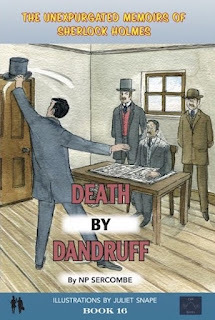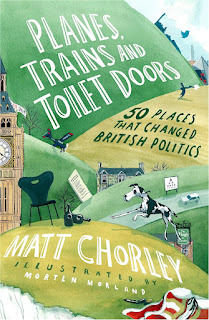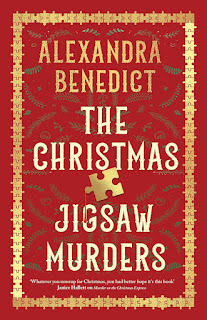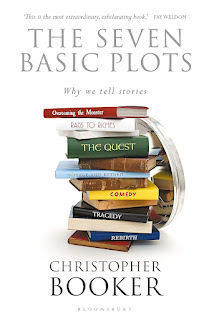Brian Clegg's Blog, page 16
January 24, 2024
Book and talk news

A couple of upcoming talk dates, plus a sneak peak of books in the production process: I've talks coming up on 17 February and 16 March, while my next book is out in July.
Both talks are on Interstellar Tours: Saturday 17 February is at 10.45am at the Festival of Tomorrow in Swindon. It's part of the family day (free entrance) 10am to 5pm - my talk (£3) is on at 10.45 in the Egg Lecture theatre. You can book tickets here (click the 'Free' get tickets and then add on my talk), and find out more about the Festival here.
Saturday 16 March is at the Royal Institution in London. You can find out more and book tickets (£7/£10/£16) here.
I've two books in the pipeline. Due to be published in July 2024 is a book in Icon's compact Hot Science series. Called Weather Science it looks at all aspects of the weather and how meteorology has moved from folklore to leading edge computing and satellite technology. More details closer to the release date. The other I'll be finishing off by the end of February, with publication likely to be in 2025. It's very different to many of my books and looks at the science (or lack of it) of something of huge importance to everyday life that arguably defines us as humans.
See all of Brian's online articles or subscribe to a weekly digest for free hereJanuary 23, 2024
Death by Dandruff - Nicholas Sercombe (and Arthur Conan Doyle) ***
 This is one of the weirdest books I have ever come across. Strictly speaking it's a short story, but packaged as a thin Ladybird-like hardback. It's number 16 in a series that began with A Balls-up in Bohemia. The weird and wonderful idea behind it is that we see Watson's original text, before it was heavily edited for publication - in this case becoming the story The Adventure of the Stockbroker's Clerk, which after publication in the Strand magazine was incorporated into The Memoirs of Sherlock Holmes.
This is one of the weirdest books I have ever come across. Strictly speaking it's a short story, but packaged as a thin Ladybird-like hardback. It's number 16 in a series that began with A Balls-up in Bohemia. The weird and wonderful idea behind it is that we see Watson's original text, before it was heavily edited for publication - in this case becoming the story The Adventure of the Stockbroker's Clerk, which after publication in the Strand magazine was incorporated into The Memoirs of Sherlock Holmes.If you are a Holmes fan, as I am, it's inevitable that you open it alongside the original. After some minor deviations in the opening paragraph (such as changing the previous owner of Watson's new medical practice from Mr Farquhar in the original to the strangely spelled Dr. Farquar in the new version) it starts to bring in Nicholas Sercombe's novel ideas of what might have been edited out at the Strand, from the fact that Watson's wife Mary was actually Mark 'a female impersonator from Ruislip', to a scene which in the original featured Holmes arriving at Watson's house, but now is replaced by Moriarty and a third party, Miss Clytemnestra Fanning) who buys Watson's premises (after flashing her bottom).
So it goes on, with touches of the original mixed into a story that features a whole range of 'comic' situations, from Watson struggling to impersonate someone from Birmingham to his being able to punch the prime minister (Lord Salisbury) on the back (according to one of the 'pictures portraying lively action scenes' by Juliet Snape). Along the way we pick up background that was never mentioned in the original stories, whether it be Holmes' alleged middle names (Nugent Julius) or the strange origin story relationship between Holmes and Moriarty.
I'm afraid this kind of humour doesn't appeal to me. If you enjoyed, for instance, National Lampoon's Bored of the Rings, I think these books would be very much up your street - but for me it didn't work anywhere near as well as a story in its own right as did the original, and the 'funny' bits were consistently puerile. I'm sure, though (would they have got to number 16 otherwise?) that some will enjoy this series.
See all of Brian's online articles or subscribe to a weekly digest for free here You can buy Death by Dandruff from Amazon.co.uk and Bookshop.org
Using these links earns us commission at no cost to you
January 16, 2024
May contain nut (kernels)
 I quite often find myself reading food labelling, particularly if it's handy over the breakfast table. It's partly because I'm interested in what's in what I eat - but also because I had fun on a BBC TV show pointing out that it's perfectly possible, because of the mad way it's calculated, for food labelling to say that a product contains over 100% of a substance. (See the bottom of the post for my food labelling video.)
I quite often find myself reading food labelling, particularly if it's handy over the breakfast table. It's partly because I'm interested in what's in what I eat - but also because I had fun on a BBC TV show pointing out that it's perfectly possible, because of the mad way it's calculated, for food labelling to say that a product contains over 100% of a substance. (See the bottom of the post for my food labelling video.)The other day, I was perusing the back of a packet of little amaretti cakes (not the hard biscuits) we'd been given and noticed an ingredient that stirred some vague memory: these little Italian cakes were 34% apricot kernels. Somewhere in the depths of my mind I associated these with cyanide - something no one really wants to discover in their coffee-accompanying treat.

I took a look online and discovered that while apricot kernels do not contain cyanide, they do contain 'the plant toxin amygdalin, which converts to cyanide after eating'. I didn't find this hugely encouraging. Now the Irish food safety website (it happened to be the first respectable one I found) recommends not eating more than 0.37 grams of apricot kernels a day for adults and says that children shouldn't eat them at all. The box contained 140g of product according to the packaging, so that should be about 47.6g of apricot kernels. There were maybe a dozen amaretti in total - making each one over 10 times the recommended limit. And there was no warning they shouldn't be eaten by children.
Of course, it's entirely possible that the kernels have been treated in some way to remove the amygdalin - though my suspicion is that this is the substance responsible for the 'bittersweet flavour' the box is proud of. But at the very least it would have been nice to have had some labelling to clarify what safe levels are.
See all of Brian's online articles or subscribe to a weekly digest for free here
January 4, 2024
Looking forward to 2024
 Those of you who berate me when my reviews are mostly not science or science fiction books, the Christmas present reading pile is nearly done - expect more of a usual mix next week.
Those of you who berate me when my reviews are mostly not science or science fiction books, the Christmas present reading pile is nearly done - expect more of a usual mix next week.I don't believe in making New Year's resolutions - they just set you up for failure. But I hope, like me, you are, on the whole, looking forward to 2024. The world is going through a difficult period - of that there's no doubt. And politically, we've got elections in over half the democratic segment of the world - so there could be interesting times. But I do think a negative outlook can be self-fulfilling, and optimism is the best way to make the most of life.
I'm certainly looking forward to some excellent new popular science books in 2024. As it happens the first one I'll be reviewing next week is from 2022 (but the paperback, which I'm reviewing, is out in February). I know there are some excellent books on the way, including a far reaching title from last year's Royal Society Prize winner, Henry Gee. I am hoping we will have more popular science titles in areas of particular interest to me, such as physics, cosmology, IT and maths, and perhaps less emphasis on the human brain and medicine - but obviously I can see the appeal. We've certainly had some interesting scientific developments across the board in 2023, whether it's the rise of generative AI like ChatGPT or new vaccines, such as the promising Malaria vaccine.
As for me, I'm currently working on my next longer book, which is due in to the publisher in March - I can't give away anything at the moment, but I've enjoyed writing in more than anything else I've written in years*. It's unlikely to be out until 2025, but I've got big hopes for it.
Here's to the rest of 2024.
* Enjoyment in writing doesn't necessarily translate into big sales. The book I most enjoyed writing ever was Conundrum, my book of puzzles and ciphers to crack. It has some dedicated fans - and at the time of writing, 17 people worldwide have solved the book (you can see the hall of fame and find out more about the book at its website). But it hasn't been a big seller.
Image from Unsplash by Andreas Rasmussen
See all of Brian's online articles or subscribe to a weekly digest for free here
Death of a Bookseller - Alice Slater ****
 This was not the book I expected it to be - and I'm rather glad of it. It looks like a Christmas murder mystery, particularly in the red and gold cover I got. But it really isn't. A murder is involved. The book climaxes at Christmas. But this nothing like a cosy murder investigation: it is an intense dip into the intersecting lives of two women, each with deep-seated problems.
This was not the book I expected it to be - and I'm rather glad of it. It looks like a Christmas murder mystery, particularly in the red and gold cover I got. But it really isn't. A murder is involved. The book climaxes at Christmas. But this nothing like a cosy murder investigation: it is an intense dip into the intersecting lives of two women, each with deep-seated problems.Roach, obsessed with true crime is already a bookseller at the local Waterstones (sorry, Spines). Laura joins with a new management team. She's apparently the opposite of Roach - blonde, bubbly, tote-bag-carrying, chatty with the customers... but has something dark hidden in her past. Roach desperately wants to get closer to Laura, in part because of the nature of Laura's 'found poetry' - but instead finds herself pushed away (not entirely surprisingly).
The bookshop setting is one I was naturally drawn to, but I would never normally read a book that's primarily about obsession and the fragmenting relationships of two people. Both women seem to get hammered practically every evening and after a while neither is easy to relate to. However, I was kept reading: it is a very cleverly written book, alternating between Roach and Laura's viewpoints, in the first person. It's relentlessly dark (in fact, there are two 'cut scenes' included at the end of the edition I bought, and I suspect they were edited out because they provided too much light relief) - but I had to keep turning the page all along.
The ending was unexpected, but not (as I expected it to be) shocking. I'm sure Alice Slater knows her subjects' lifestyle better than I would and captures it well. The only real oddity that struck me is that perhaps Slater has never owned a pair of Doc Martens, as she makes a big thing of one of the characters wanting some DMs with yellow stitching. I've worn DMs for the last 40 years and hardly any didn't have yellow stitching - although not always there, it's very much a part of the trademark look, so it's an odd thing to emphasise.
I have limited space, so a first decision after reading a book is whether to shelf it or re-sell it. This is a shelfer.
See all of Brian's online articles or subscribe to a weekly digest for free here You can buy Death of a Bookseller from Amazon.co.uk, Amazon.com and Bookshop.org
Using these links earns us commission at no cost to you
January 3, 2024
Planes, Trains and Toilet Doors - Matt Chorley ****
 Matt Chorley is one of the best political radio presenters and podcasters around. His coverage of UK politics is sharp and insightful - but always with a sense of humour. He is also a newspaper columnist, though I confess I find his writing style there sometimes too farcical - but that doesn't apply to this book, which takes in '50 places that changed British Politics'. Although there is humour here (quite strong, for instance, on the infamous venture to Barnard Castle), this is primarily a serious look beyond Westminster at a series of key events in often unexpected locations around the country.
Matt Chorley is one of the best political radio presenters and podcasters around. His coverage of UK politics is sharp and insightful - but always with a sense of humour. He is also a newspaper columnist, though I confess I find his writing style there sometimes too farcical - but that doesn't apply to this book, which takes in '50 places that changed British Politics'. Although there is humour here (quite strong, for instance, on the infamous venture to Barnard Castle), this is primarily a serious look beyond Westminster at a series of key events in often unexpected locations around the country.Some are small but significant, such as Gordon Brown getting locked in a toilet. Others involve an event that would change history more directly (or even personally, in the story of Spencer Perceval, the only UK prime minister to be assassinated). Although many of the events were familiar to me as someone with an interest in politics, there was a lot that I never knew - and the whole presents a fascinating insight into the quirks and oddities of our political history.
I was recommended this book by Peter Mandelson (not personally, I hasten to add, but on another excellent podcast hosted by Chorley), and I'm glad I took up his suggestion. It may be (dull sounding) political history, but it's never heavy and very enjoyable. The icing on the cake, which I am sure the author enjoyed, is that at the time of writing, Amazon had it listed as '#2 most gifted in toilet training.'
See all of Brian's online articles or subscribe to a weekly digest for free here You can buy Planes, Trains and Toilet Doors from Amazon.co.uk, Amazon.com and Bookshop.org
Using these links earns us commission at no cost to you
December 30, 2023
The Christmas Jigsaw Murders - Alexandra Benedict ***
 We seem to be overwhelmed with Christmas murder mysteries this year - in this case in a puzzler-friendly format as Alexandra Benedict throws in a number of optional challenges for the reader, from spotting references to Fleetwood Mac songs (always a Christmassy activity) to Dickens novel anagrams in the text and a Christmas song puzzle in the chapter headings.
We seem to be overwhelmed with Christmas murder mysteries this year - in this case in a puzzler-friendly format as Alexandra Benedict throws in a number of optional challenges for the reader, from spotting references to Fleetwood Mac songs (always a Christmassy activity) to Dickens novel anagrams in the text and a Christmas song puzzle in the chapter headings.If, like me, you just want to get on with the story, then there's a tangled web of relationships and past dark secrets to sort out in tracking down a series of murders that are accompanied by jigsaw puzzle pieces as clues. The murderer has devised these hints for the crossword-setting main character, Edie. The murder mystery itself is satisfying, and Benedict manages the build of clues and red herrings well. But I did have two problems.
The lesser one is that Benedict's writing style can be a little uneven. There are some over-baked similes (think 'tree branches reached for them like the bony hands of hair-ruffling aunts'), while things can get a little clunky - for example the opening page of chapter 10 where we get five paragraphs in a row that start with either 'Sean' or 'Liam' making it distinctly 'tell' rather than 'show'. The bigger one is Edie.
We've had something of a flood of late, thanks in part to the success of Richard Osman's books, of murder mysteries where the detectives are infuriating but somehow loveable older characters. Stretching the imagination more than a little, these amateur sleuths manage to get to the solution before or with the police. Edie also sets out to find the culprit - but there is nothing loveable about this octogenarian - she is awful. What's more, at least the Thursday Murder Club work with the police, even if they sometimes hold things back a while. Here Edie's great nephew/stepson is a police inspector, yet she withholds vital evidence, resulting in dire outcomes that would have any real person locked away.
Edie seems based on the idea that if you are a 'character' you can get away with anything - but she was so unlikable it partially spoiled the book for me - I'm sure you can draw a parallel with Scrooge, but I don't like Christmas Carol much either. Plenty of good stuff going on here, but it's not a book I can wholeheartedly recommend.
One weird addendum - the Amazon.com page for this book describes totally different characters, which is, to say the least, odd.
See all of Brian's online articles or subscribe to a weekly digest for free here You can buy The Christmas Jigsaw Murders from Amazon.co.uk, Amazon.com and Bookshop.org
Using these links earns us commission at no cost to you
December 20, 2023
The Thursday Murder Club - Richard Osman ****
 Until recently, I'd classified Richard Osman's cosy murder mysteries as 'not worth reading as it's only successful because he's on the TV'. But a friend's write up persuaded me to give them a try - and I confess they are better than expected, if not what I expected.
Until recently, I'd classified Richard Osman's cosy murder mysteries as 'not worth reading as it's only successful because he's on the TV'. But a friend's write up persuaded me to give them a try - and I confess they are better than expected, if not what I expected. I'm reviewing the first two books in the series together here because the first, The Thursday Murder Club, feels as if Osman hasn't quite decided what he's writing, while it becomes much clearer in the second book. After reading that, my impression of the first improved significantly.
The basics sound more than a little silly. A group of four OAPs in a retirement village attempt to crack old, unsolved murders as entertainment, but this activity draws them into sorting out a current case with the help of a pair of friendly police officers. (It also helps that one of the OAPs is ex-MI6.)
 What we get in that first title is a perfectly reasonably cosy murder mystery (a genre I generally enjoy) with some well thought out commentary on the nature of aging, loss and dementia. Osman effectively deploys short chapters to encourage 'just one more'. However, I did also have some issues. It's written in a particularly irritating present tense. The plot is a touch confused. And though the cover quotes ooze about how funny it is, I didn't find that all. The humour is primarily either 'aren't old people funny stuff', like the 'What is this Instagram thing?' type diary entries from one character (which diary sections unfortunately continue through the entire series), or 'Isn't it funny when old people pull one over on someone younger by foiling expectations.' I found it more patronising than funny.
What we get in that first title is a perfectly reasonably cosy murder mystery (a genre I generally enjoy) with some well thought out commentary on the nature of aging, loss and dementia. Osman effectively deploys short chapters to encourage 'just one more'. However, I did also have some issues. It's written in a particularly irritating present tense. The plot is a touch confused. And though the cover quotes ooze about how funny it is, I didn't find that all. The humour is primarily either 'aren't old people funny stuff', like the 'What is this Instagram thing?' type diary entries from one character (which diary sections unfortunately continue through the entire series), or 'Isn't it funny when old people pull one over on someone younger by foiling expectations.' I found it more patronising than funny.These negatives remained in the second title The Man Who Died Twice, but could be almost entirely dismissed because the caterpillar of volume 1 turned into a butterfly in volume 2. It now became far clearer that these aren't really cosy murder mysteries at all. They are Enid Blighton's Famous Five books, reimagined for grownups. A gang who the world discounts (substitute OAPs for children) take on spies, international criminals and the rest and overcome thanks to their wit, pluck and a degree of unexpected subversiveness. With this perspective, I have become a fan.
There's really no need to go into plots, or characters, any more than there's a need to do so with a Famous Five book. It's a fun, pure escapist read - with the added benefit of Osman's impressive grasp of the difficulties of growing old, combined with the release some older people feel from the pressures facing younger people.
See all of Brian's online articles or subscribe to a weekly digest for free here You can buy The Thursday Murder Club from Amazon.co.uk, Amazon.com and Bookshop.org and The Man Who Died Twice from Amazon.co.uk, Amazon.com and Bookshop.org
Using these links earns us commission at no cost to you
December 18, 2023
There's wrong and there's disastrously wrong
 The other day, I was reading the late Christopher Booker's ridiculously long The Seven Basic Plots and came on a spot of science writing that made me gasp in its comprehensive inaccuracy. He is looking at creation myths, giving us three versions, the final being the Big Bang theory, which he tells us 'is still "telling a story", and in this sense we can look at it just as we would look at any other type of story.
The other day, I was reading the late Christopher Booker's ridiculously long The Seven Basic Plots and came on a spot of science writing that made me gasp in its comprehensive inaccuracy. He is looking at creation myths, giving us three versions, the final being the Big Bang theory, which he tells us 'is still "telling a story", and in this sense we can look at it just as we would look at any other type of story.Now, I have no problem at all with that statement. A scientific theory of any kind is definitely a form of narrative - and since cosmology tends to be at the more speculative end of science, because you can hardly replicate the experiment, it is particularly apt to think of it in this way. But here's the story that Booker tells us:
'The "Big Bang" theory of the creation of the universe suggests that in the beginning there was an agglomeration of hydrogen atoms, so tightly compressed together that it was only millimetres across and of almost infinite mass. This constituted, as it were, a 'Universal Egg' which contained the potential for all that was to follow. At a certain point, somewhere around 15 billion years ago, this 'Egg' exploded, with such force that electrons jumped from one nucleus to another, creating the atoms of all the other elements. These were the atoms which still constitute the physical universe and everything in it, including ourselves.'
Umm. The book was published in 2004, when 13.7 billion years was perhaps more popular than the current 13.8 billion years for the age of the universe - but no one was thinking 15 billion (hey, what's over a billion years between friends?). However, the excruciatingly bad part is the idea that we started with hydrogen atoms, and all the other elements were created in the Big Bang when 'electrons jumped from one nucleus to another.'
If Booker had bothered to read any basic popular science title at the time, he would surely not have been able to write such tripe. It did occur to me briefly that this was a joke on his part - assuming his readers would be ignorant of science, given the old C. P. Snow 'two cultures' divide (see this), he made up his Big Bang story to demonstrate how much it was just a myth. But I'm afraid it's almost certainly the case that he simply couldn't be bothered to check his facts, as this was science as opposed to his heavily researched literary text.
On the subject of story plots the book is interesting, if far too long. But, really? To use two of his basic plots, this bit of science writing veers between comedy and tragedy.
See all of Brian's online articles or subscribe to a weekly digest for free here You can buy The Seven Basic Plots from Amazon.co.uk, Amazon.com and Bookshop.org
Using these links earns us commission at no cost to you
December 14, 2023
Apology to science book lovers
 This time of year I mostly abandon popular science books for lighter reading. As a result, crime will feature frequently in my reviews, which will also often be Christmas- themed. Normal service will be resumed as soon as I've got through my Christmas reading pile.
This time of year I mostly abandon popular science books for lighter reading. As a result, crime will feature frequently in my reviews, which will also often be Christmas- themed. Normal service will be resumed as soon as I've got through my Christmas reading pile. Image by Mike Blank from Unsplash
See all of Brian's online articles or subscribe to a weekly digest for free here



